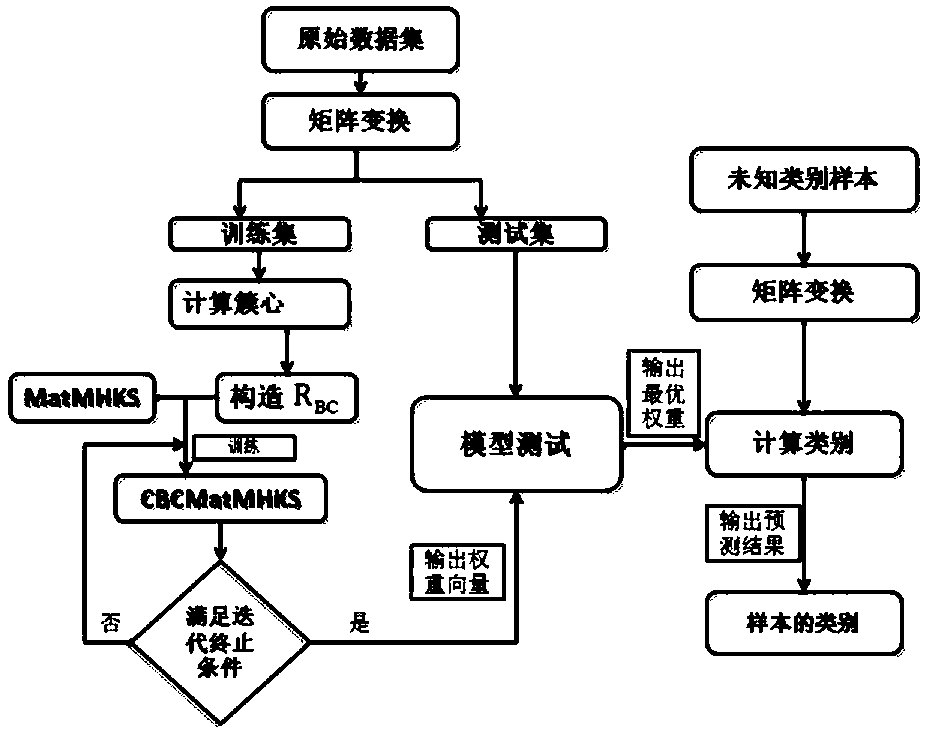A Matrix Classification Model Based on Between-Class Discrimination
A matrix pattern and matrix technology, which is applied in the field of learning machine models based on inter-class discrimination matrix, can solve the problem of not considering the discriminative information between matrix patterns and other classes, and achieve the effect of improving the overfitting problem and improving the classification accuracy.
- Summary
- Abstract
- Description
- Claims
- Application Information
AI Technical Summary
Problems solved by technology
Method used
Image
Examples
Embodiment Construction
[0010] The present invention will be further introduced below in conjunction with the accompanying drawings and embodiments. The method of the present invention is divided into three major steps.
[0011] The first step: data set collection and transformation,
[0012] First process the collected data set, digitize the non-numerical data set, grayscale the image data set, and then use the dimensionality reduction algorithm to reduce its dimensionality for subsequent processing. Secondly, matrix the collected data set, for example, x∈R 1×N Converting it into a matrix sample is where d 1 × d 2 =N.
[0013] Step 2: Model training
[0014] 1) First construct the regularization term R BC
[0015] Assume that the matrix pattern of the binary classification is and the class of each pattern is Use the clustering method to cluster each category separately, and calculate its cluster center as in equation (1):
[0016]
[0017] where the number of clusters of each class...
PUM
 Login to view more
Login to view more Abstract
Description
Claims
Application Information
 Login to view more
Login to view more - R&D Engineer
- R&D Manager
- IP Professional
- Industry Leading Data Capabilities
- Powerful AI technology
- Patent DNA Extraction
Browse by: Latest US Patents, China's latest patents, Technical Efficacy Thesaurus, Application Domain, Technology Topic.
© 2024 PatSnap. All rights reserved.Legal|Privacy policy|Modern Slavery Act Transparency Statement|Sitemap



